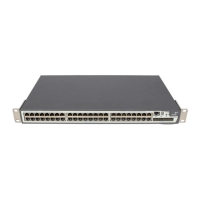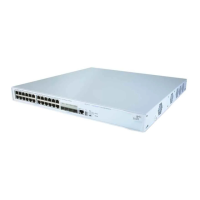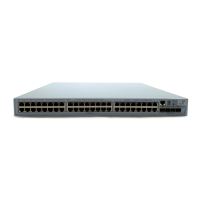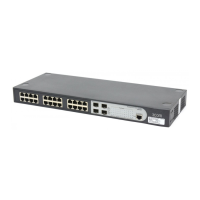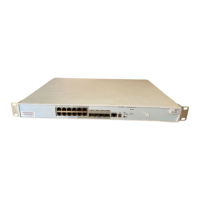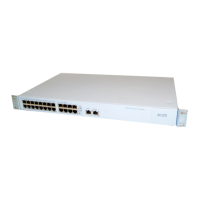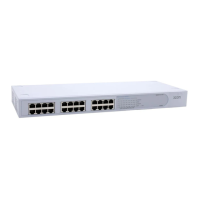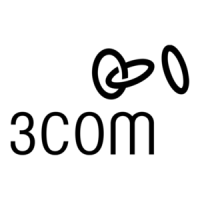
Do you have a question about the 3Com 9100 and is the answer not in the manual?
| Device Type | Switch |
|---|---|
| Form Factor | Rack-mountable |
| Manageable | Yes |
| Switching Capacity | 48 Gbps |
| Forwarding Rate | 35.7 Mpps |
| Jumbo Frame Support | Yes |
| Power Supply | 100-240V AC, 50/60Hz |
| Dimensions | 4.4 cm x 44 cm x 25.7 cm |
Defines key terms used throughout the guide, including "Switch 9100".
Explains the typographical and iconographic conventions used in the document.
Lists other related documents in the Switch 9100 documentation set.
Lists the key features of the Switch 9100.
Describes the physical ports and their specifications.
Explains the concept and benefits of Virtual LANs.
Details the Spanning Tree Protocol for network fault tolerance.
Illustrates and describes the front panel components of the switch.
Lists the default configuration settings of the switch.
Guides on choosing the optimal physical location for the switch.
Provides instructions for mounting the switch in racks or placing it free-standing.
Explains how to connect management devices to the console port.
Details the initial login procedure and basic configuration.
Explains the structure and rules for entering switch commands.
Details various methods to manage the switch (CLI, Telnet, Web, SNMP).
Guides on setting up and configuring the Simple Network Management Protocol.
Covers manual configuration of port speed and duplex modes.
Introduces the concept and purpose of Virtual Local Area Networks.
Explains IGMP snooping for optimizing multicast traffic.
Details various methods for creating VLANs, including port-based.
Explains the function and contents of the Forwarding Database.
Provides commands and procedures for configuring FDB entries.
Explains how to view the entries currently in the FDB.
Introduces STP as a mechanism for network fault tolerance.
Details the operational stages of the Spanning Tree Protocol.
Covers the steps and commands for configuring STP on the switch.
Explains the concept of Quality of Service for traffic management.
Describes the default QoS profiles and their parameters.
Explains how to classify traffic and create QoS policies.
Provides information on monitoring the switch's operating status.
Details how to view statistics for individual ports.
Explains how to check for and diagnose port transmit and receive errors.
Covers the switch's logging capabilities, including local and remote logging.
Introduces Remote Monitoring capabilities for network analysis.
Instructions for enabling or disabling access via the web interface.
Details on how to connect to and log into the switch's web interface.
Explains the layout and structure of the web interface.
Procedure for upgrading the switch's operating software image.
Explains how to save switch configurations to non-volatile storage.
Details how to reset the switch configuration to its original factory settings.
General safety precautions and warnings for installing and maintaining the switch.
Provides the physical size and weight specifications of the switch.
Lists operating and storage temperature, and humidity specifications.
Details the input voltage, frequency, and current rating for the switch's power supply.
Troubleshooting common issues related to the switch's LED indicators.
Addresses problems encountered when using the CLI for management.
Troubleshoots common port connectivity and error issues.
Lists various online resources for technical support from 3Com.
Provides the URL for 3Com's official website for support information.
Advises on contacting the network supplier for assistance.



